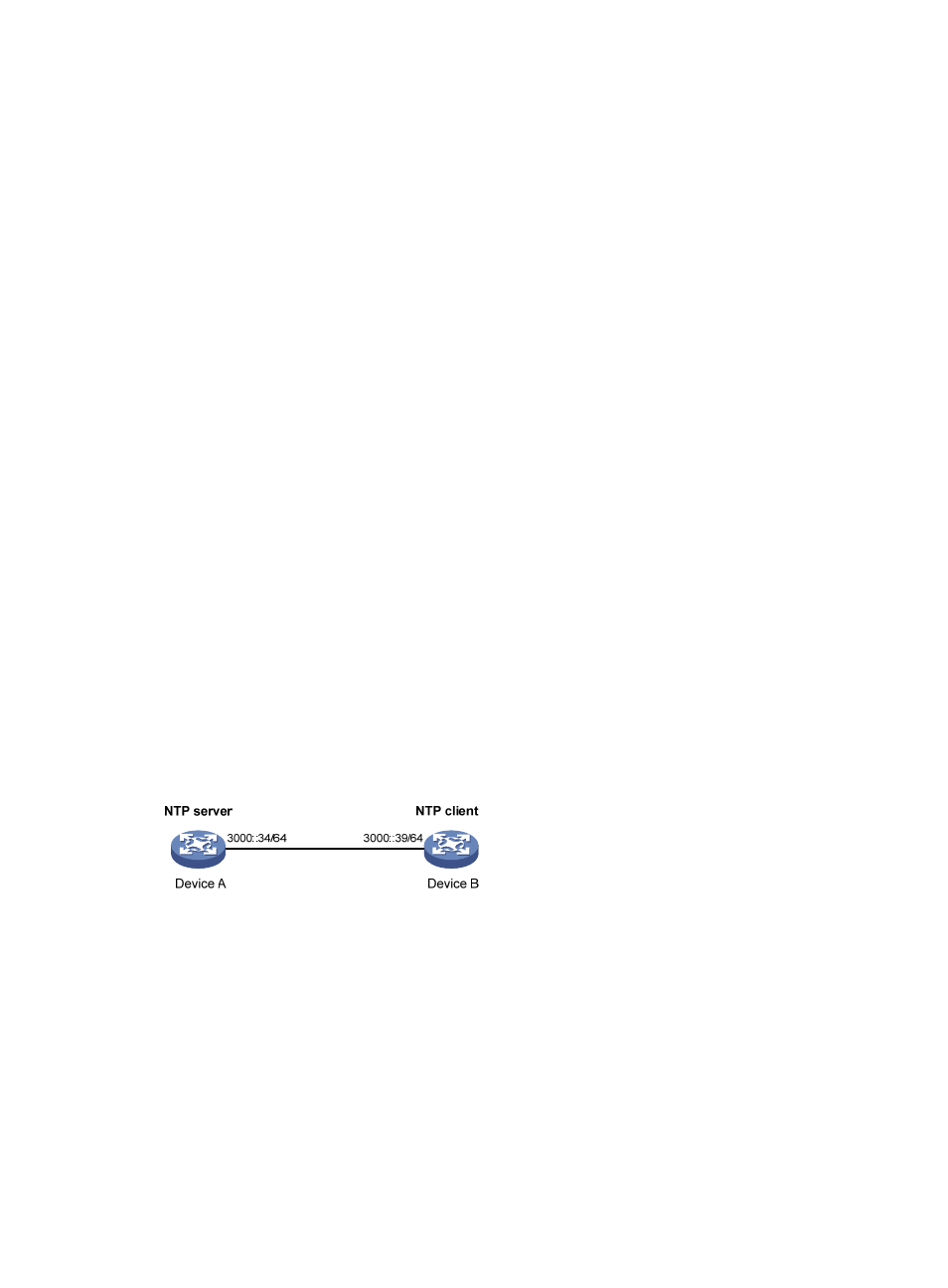Ipv6 ntp client/server mode configuration example, Network requirements, Configuration procedure – H3C Technologies H3C MSR 5600 User Manual
Page 94

81
Local mode: client
Reference clock ID: 1.0.1.11
Leap indicator: 00
Clock jitter: 0.000977 s
Stability: 0.000 pps
Clock precision: 2^-10
Root delay: 0.00383 ms
Root dispersion: 16.26572 ms
Reference time: d0c6033f.b9923965 Wed, Dec 29 2010 18:58:07.724
The output shows that Device B has been synchronized to Device A, the clock stratum level of
Device B is 3, and the clock stratum level of Device A is 2.
# Display IPv4 NTP association information for Device B.
[DeviceB] display ntp-service sessions
source reference stra reach poll now offset delay disper
********************************************************************************
[12345]1.0.1.11 127.127.1.0 2 1 64 15 -4.0 0.0038 16.262
Notes: 1 source(master), 2 source(peer), 3 selected, 4 candidate, 5 configured.
Total sessions : 1
The output shows that an association has been set up between Device B and Device A.
IPv6 NTP client/server mode configuration
example
Network requirements
As shown in
, the local clock of Device A is to be used as a reference source, with the stratum
level 2. Device B operates in client mode and Device A is to be used as the IPv6 NTP server for Device
B.
Figure 30 Network diagram
Configuration procedure
1.
Set the IP address for each interface as shown in
. (Details not shown.)
2.
Configure Device A:
# Enable the NTP service.
[DeviceA] ntp-service enable
# Specify the local clock as the reference source, with the stratum level 2.
[DeviceA] ntp-service refclock-master 2
3.
Configure Device B:
# Enable the NTP service.
